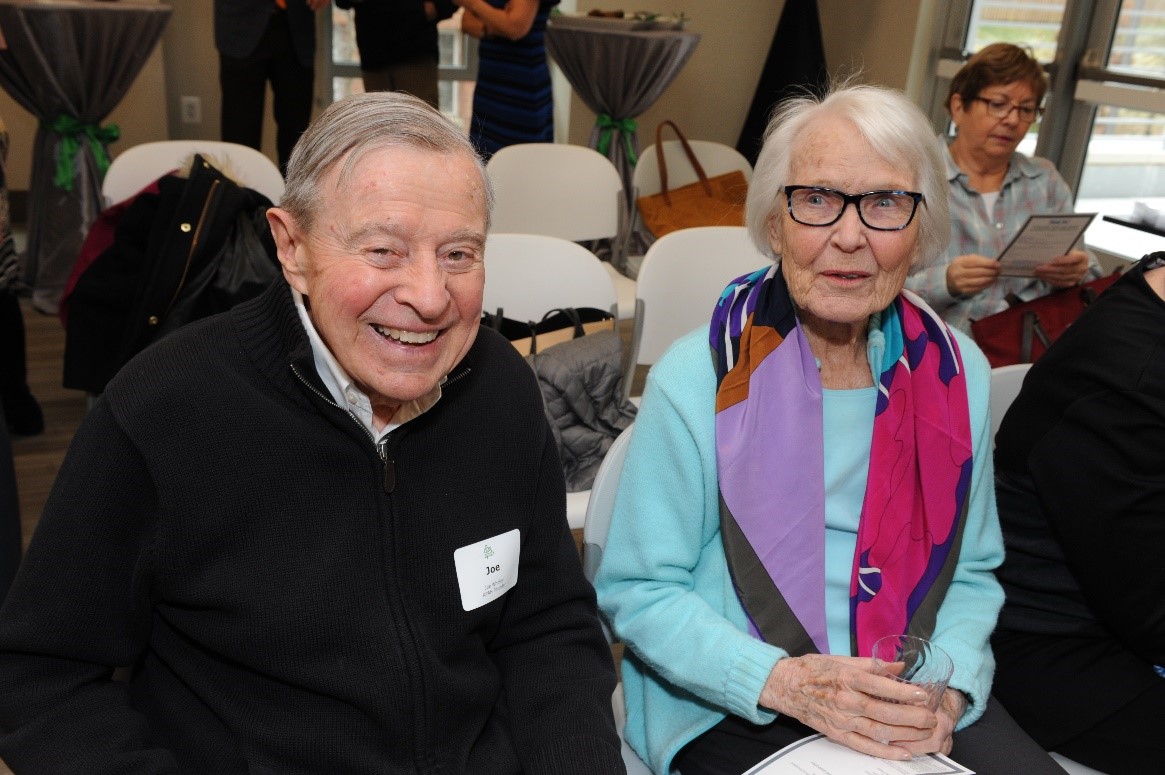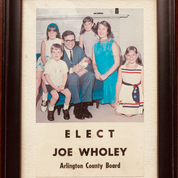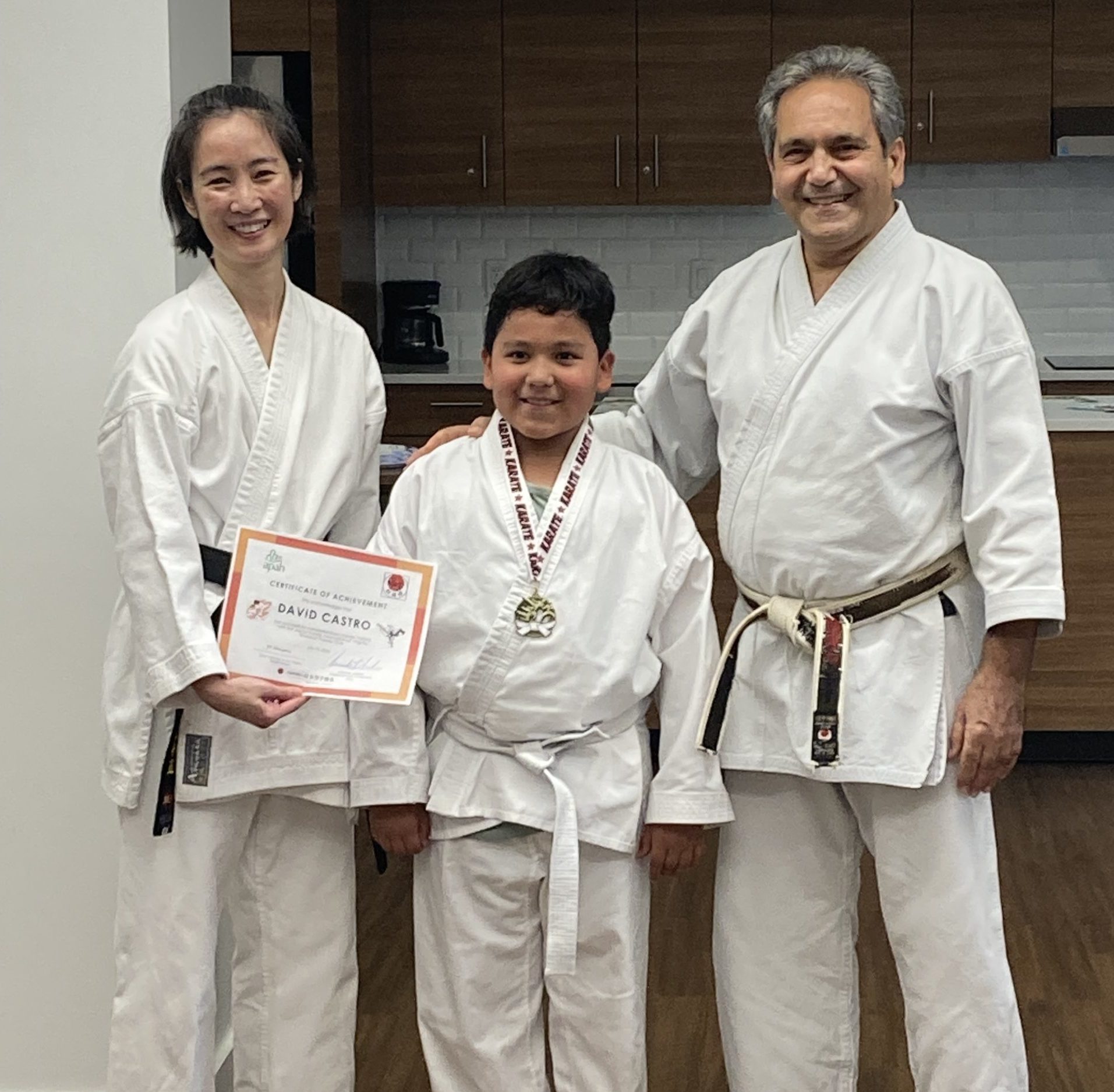First published in January 2021.
This piece is the first in a series on APAH’s Founders.

Living a Life of Purpose and Vision
More than 50 years after Joe’s run for County Board, there is still so much to ask and learn about APAH founders Joe and Midge Wholey. Thank you to John Milliken for sharing this pin.
Still nearly newlyweds, Joe and Midge Wholey arrived in Arlington in the early 1960s. The two met at Catholic University, where Joe studied mathematics and philosophy and Midge became a registered nurse. Joe was planning to be a math teacher, but after graduate school at Harvard, the young couple found themselves back in Washington when Joe joined the team of Robert McNamara’s brilliant “whiz kids” working at the Pentagon.
Grounded in their deeply shared faith and commitment to social justice and service, Midge and Joe quickly jumped into community life focusing their energy on civil rights and poverty programs. In Arlington in the early 60s, that meant getting involved with Arlingtonians for a Better County (ABC), a score of civil rights groups, and the local Democratic party. Like hundreds of thousands of others, Joe joined the 1963 March on Washington, with Midge only staying behind because the arrival of their fourth child, Skef was just days away.
Building a Modern, Inclusive Arlington
By 1970, Joe’s activism fueled a successful run for the Arlington County Board. It was an exciting, tumultuous time of extraordinary change. The western end of I-66 had just been completed and on December 9th , METRO broke ground in Washington, DC, a step that would transform Arlington and the entire DMV region. Arlington was losing population, shopping was leaving for Fairfax and, like today, there were strong and differing perspectives on growth. Joe and his then colleagues on the Board wanted to find ways to look beyond day-to-day government activities and create a long-term vision, plan, and process.
From the adoption of a comprehensive plan for the Rosslyn-Ballston Corridor, to the introduction of the bull’s eye concept that focused mixed, high-density development around Metro stations, to the preservation of greenspace and watershed, and more, so much of what Arlington residents know today is the direct result of the Long Range County Improvement Program initiative created by Joe Wholey.
“The transformation is incredible,” Joe and Midge’s daughter, Jane Wholey, notes with pride. “I asked my Dad ‘how did you come up with this vision?’ He told me that ‘we just were lucky enough to have a bunch of policy nerds living in Arlington who all wanted to build a community that was the best for their families.’ It turned out that that group had the skills—the analytical skills, the budgetary skills, and the visionary skill as well. It has turned out so well for all of us.”
Centered on Family
Meeting the needs of families has always been central for Joe and Midge. Beyond planning, zoning, and tax policy, Joe points to opening Arlington libraries on Sundays as a key accomplishment of his Board
 Politics was a family affair as Joe fought for a better community for all Arlington families. Picture courtesy of Jane Wholey.
Politics was a family affair as Joe fought for a better community for all Arlington families. Picture courtesy of Jane Wholey.
service, and he continues to work on literacy and childcare issues. Midge, who returned to clinical work once their five children were older, directed Community of Hope, treating drug addiction, HIV patients, and low-income families without access to health care.
This commitment to family and service left a lasting impact on the Wholey children and an appreciation for the firm foundation a strong community can provide. Jane and her siblings accompanied their parents and others in their faith community as they volunteered in soup kitchens and struggling neighborhoods. And, despite the demands of Board service, family time was sacrosanct, with raucous family dinners each night promptly at 6:30, with all five children vying for their parents’ attention before the start of evening meetings. On Saturdays and Wednesday nights, Joe often gave Midge a needed break, taking the children with him to the Pentagon or on regular outings to the Washington Memorial.
The Birth of APAH
Since their formative days at Catholic University, Joe and Midge have continually worked to live into their faith. With three other couples and dear friends, Tom and Dolores Leckey, Rhoda and Bill Nary, and Jean and Jack Sweeney, they studied Economic Justice for All: A Pastoral Letter on Catholic Social Teaching and the U.S. Economy. The gathering was far from their first. The couples met monthly for years for book reflections, political discussions, personal sharing, and prayer. Over dinner and discussion, they contemplated what the readings called them to do, and from these discussion, the Arlington Partnership for Affordable Housing was born. Pooling their own resources and expertise and with some additional start-up funds from their church, Our Lady Queen of Peace, they began to purchase and preserve affordable apartments.

From the start, it was a team effort. Jean recalls Midge finding the Irish proverb that became a part of the new organization’s first logo, In the shelter of each other, the people live. Jack had real estate experience, others budget and finance expertise. Tom was named their first president and Joe remembers both Tom and Jack helping with the first repairs at Fisher House.
More than 30 years later, Joe and Midge and the remaining founders continue as stalwart supporters of APAH and its work, thoughtful advocates for affordable housing and the needs of low-income families. “We are deeply grateful for their leadership that inspires us to this day,” notes former APAH President and CEO Nina Janopaul. “We aspire to have the same impact, forging new paths for equity and racial justice in our community, that they pioneered thirty years ago.”








